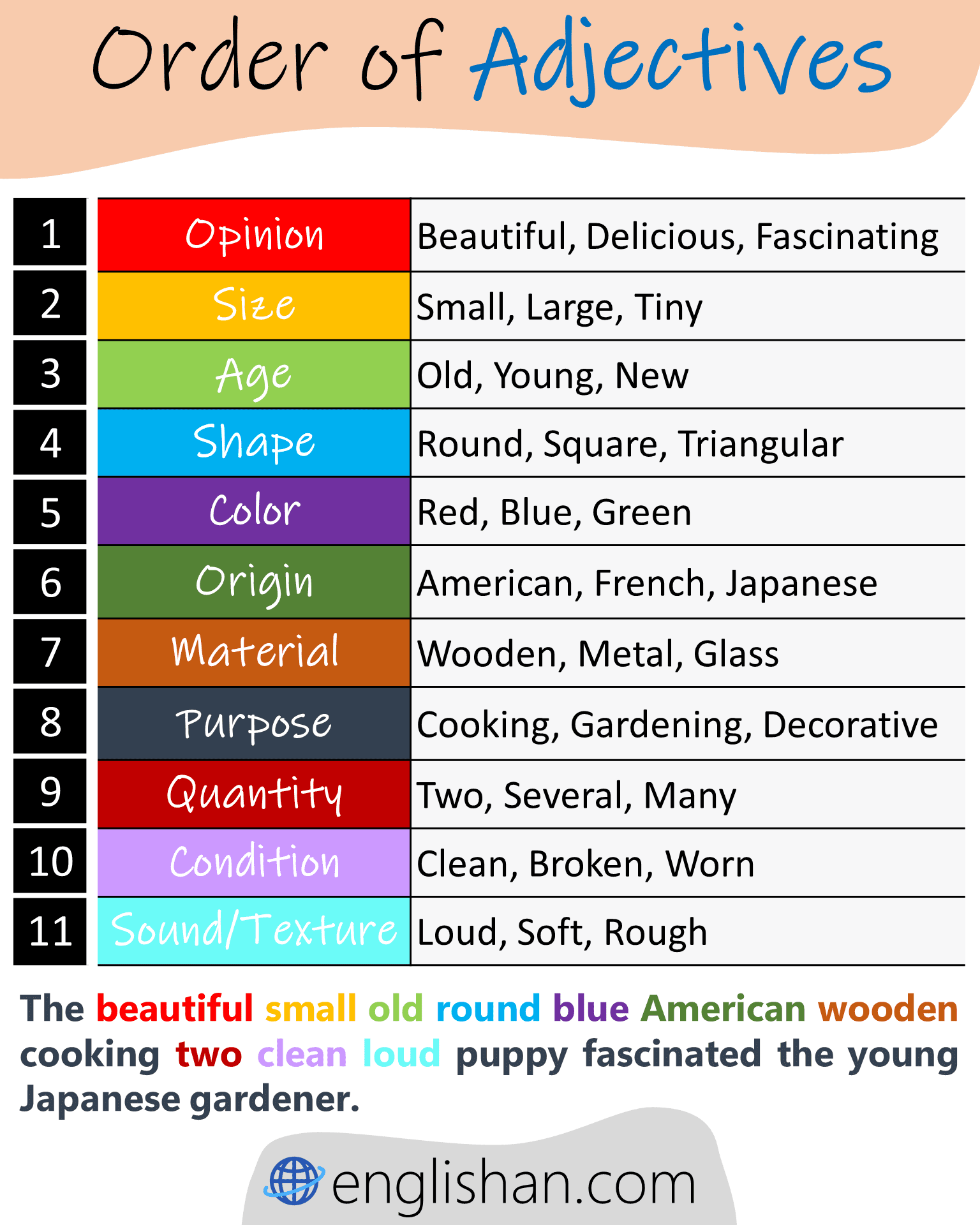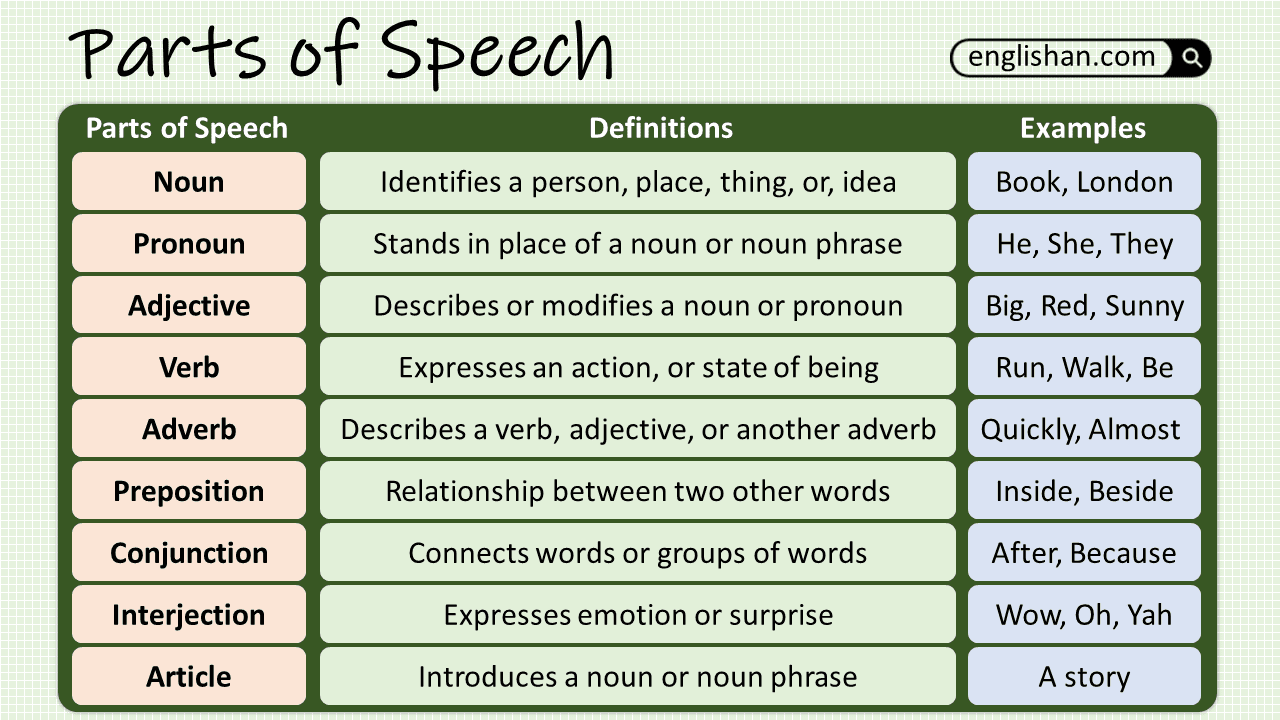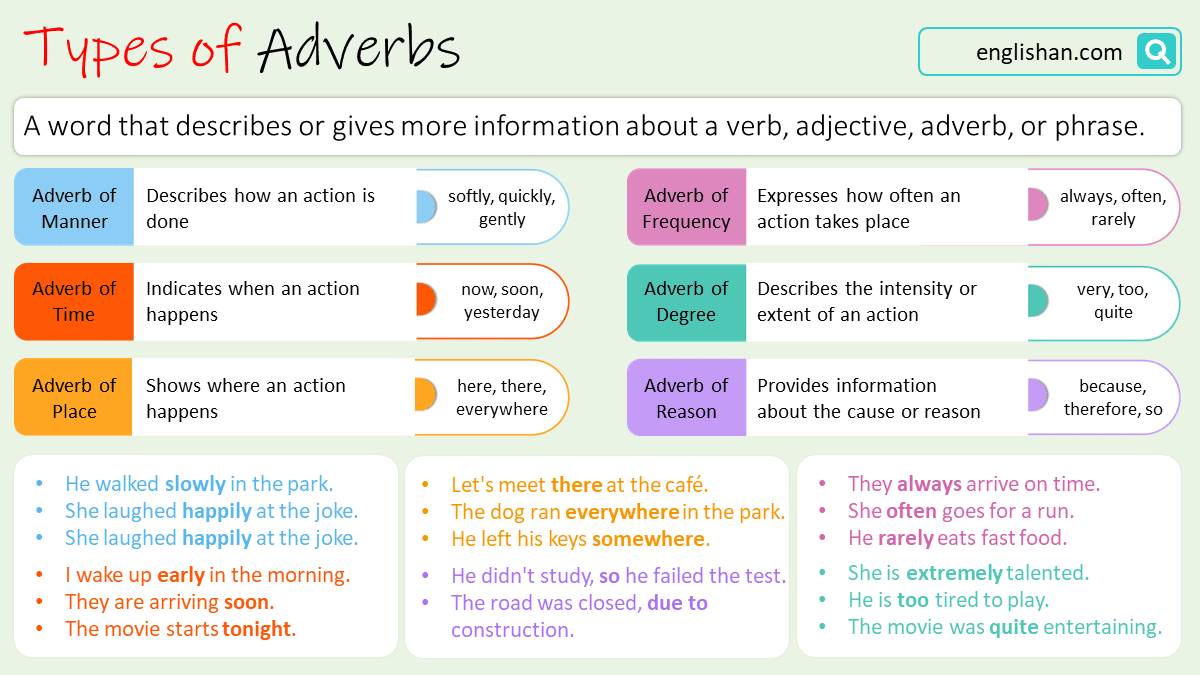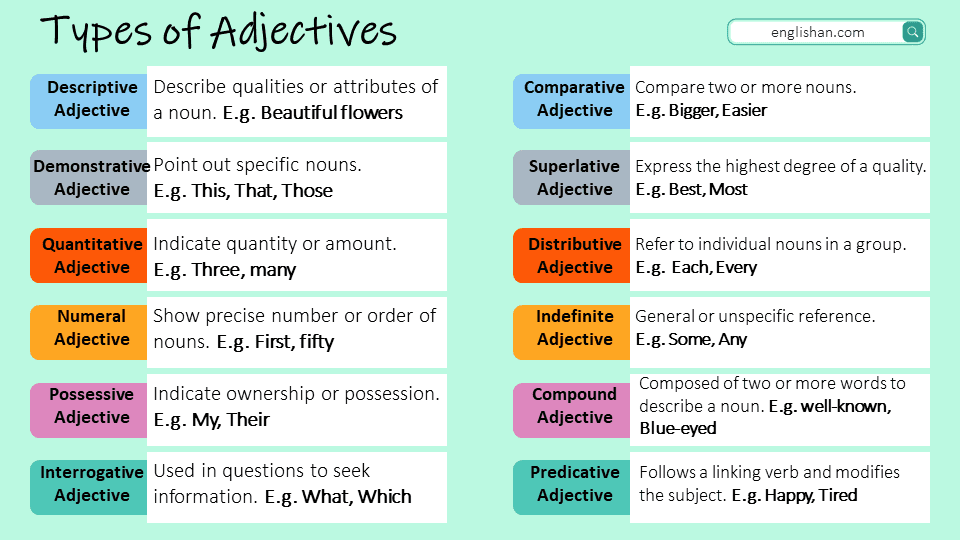Contents
Understanding the order of adjectives in English is essential for mastering the language, especially for those who are learning it as a second language. Adjectives are words that describe nouns, and when multiple adjectives are used together, there is a specific order in which they should be placed. This guide will help you understand the rules, with examples, to make learning easier and more effective.
What Is the Order of Adjectives?
In English, when you use more than one adjective before a noun, the adjectives must be placed in a specific order. Native speakers often follow this order naturally, but it can be confusing for learners. The correct order of adjectives is generally as follows:
| Category | Explanation | Examples |
|---|---|---|
| Quantity | How many? | two, several, many |
| Opinion | What is the general opinion? | beautiful, ugly, lovely |
| Size | How big or small? | large, small, tiny |
| Age | How old? | young, old, ancient |
| Shape | What shape? | round, square, oval |
| Color | What color? | red, green, blue |
| Origin | Where is it from? | American, Mexican, Asian |
| Material | What is it made of? | wooden, metal, plastic |
| Purpose | What is it used for? | dining (table), running (shoes) |

Applying the Order of Adjectives
Understanding the order of adjectives is one thing; applying it correctly is another. Here are a few examples to illustrate:
Correct Examples
- A small round red ball.
- An old Italian wooden chair.
- A beautiful large green garden.
Incorrect Examples
- A red round small ball. ❌
- An wooden old Italian chair. ❌
- A green large beautiful garden. ❌
In each of the incorrect examples, the adjectives are out of order, making the sentence awkward and unclear.
Trick for Order of Adjectives
OSASCOMP
Each letter in the mnemonic represents the corresponding category of adjectives in the correct order:
- Opinion
- Size
- Age
- Shape
- Color
- Origin
- Material
- Purpose
Mnemonic Sentences
| Noun Phrase | Explanation |
|---|---|
| A beautiful large old round red Italian wooden dining table | Opinion (beautiful), Size (large), Age (old), Shape (round), Color (red), Origin (Italian), Material (wooden), Purpose (dining) |
| A delicious small new square white Japanese plastic bento box | Opinion (delicious), Size (small), Age (new), Shape (square), Color (white), Origin (Japanese), Material (plastic), Purpose (bento) |
| An interesting tiny ancient green French silk scarf | Opinion (interesting), Size (tiny), Age (ancient), Color (green), Origin (French), Material (silk), Purpose (scarf) |
I have a beautiful small house in the countryside.
She wore an elegant long dress to the party.
The children played with a new wooden toy.
He drove a fast red sports car down the highway.
We enjoyed a delicious Italian meal at the restaurant.
The museum displayed an ancient Egyptian artifact.
She carried a small black leather handbag.
They live in a modern spacious apartment in the city center.
The students read an interesting historical novel for their English class.
He bought a round glass coffee table for his living room.
FAQs
In English, adjectives usually follow a specific order: Quantity, Opinion, Size, Age, Shape, Color, Origin, Material, Purpose (Q+OSASCOMP).
For example: Three small old round red French wooden chairs.
OSASCOMP is a rule for adjective order in English. It stands for Opinion, Size, Age, Shape, Color, Origin, Material, Purpose.
Example: An interesting tiny ancient green French silk scarf.
The correct order of adjectives in English is Quantity, Opinion, Size, Age, Shape, Color, Origin, Material, Purpose. For example, we say “two lovely small vintage round red Italian leather chairs” following this order naturally.
The adjective order trick in English is to remember “OSASCOMP”: Opinion, Size, Age, Shape, Color, Origin, Material, Purpose.
Example: a beautiful large old round brown leather chair.
Check Your Understanding by Solving
You May Also Like








